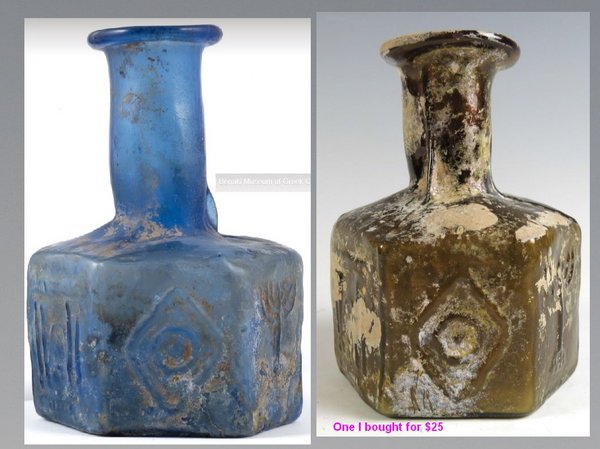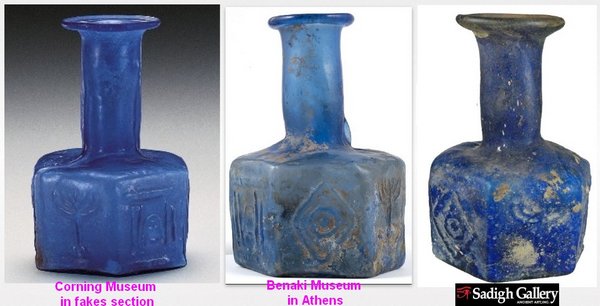
|
|

|
YOU ARE HERE:>> REAL or FAKE>Museums also make mistakes , section 2
Looking into some matters regarding Byzantine blown glass I came across this:
forward.com/articles/175799/ancient-tchotchkes-deepen-our-understanding-of-jew/
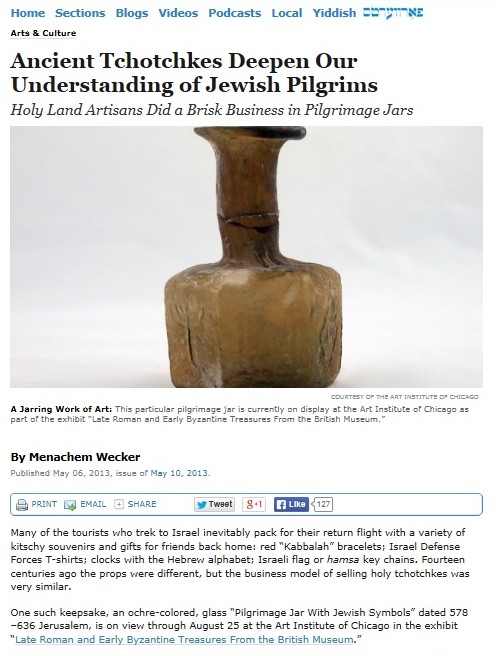
On loan from the British Museum.
What worries me is that I can find many parallels!
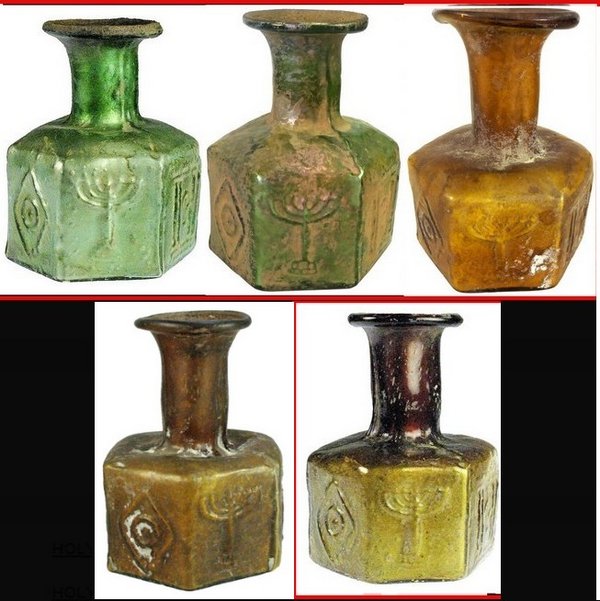
Could it possibly be?
($900 or $2024.99 (with discount) if you buy elswhere
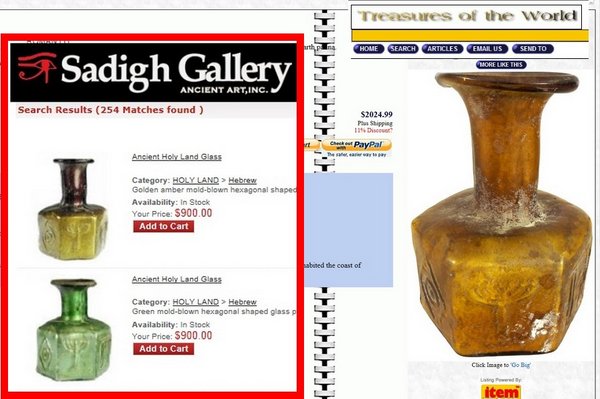
Compare:
The neck of the BM one has been broken and repaired.
It looks slightly longer but that could be the angle the photos were taken at.
Below, from the same seller sources: slightly longer necked versions.
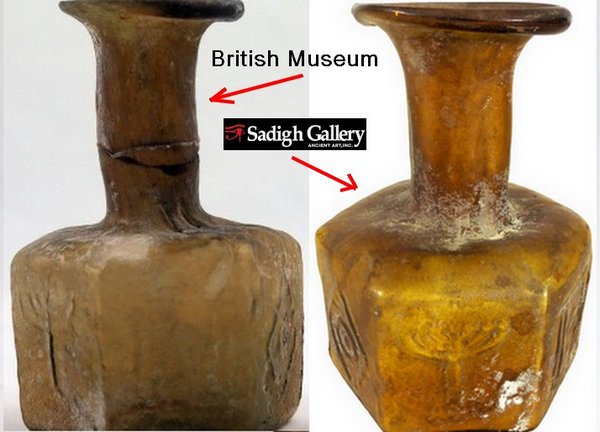
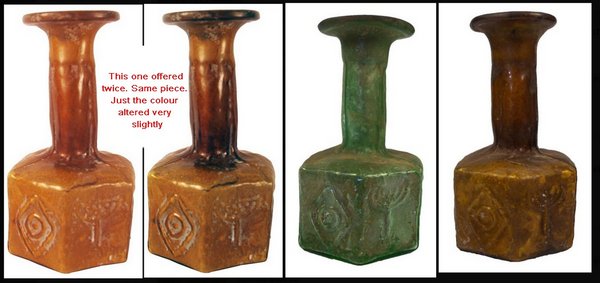
Talking of the neck.....can you see something I can see?
The makers of these reproductions ( Fakes actually, as they are sold with certificates of authenticity)
The information given is of course wrong. The seller does not know anything about antiquities.
Description
Golden amber mold-blown hexagonal shaped glass pilgrim jar with flattened shoulders,
cylindrical neck, flaring mouth, rolled rim, decorative Menorahs, Lozenges and Temples,
some iridescence and encrustations.
Size: 3 ¼" x 2 ½"
Date: 100-300 AD
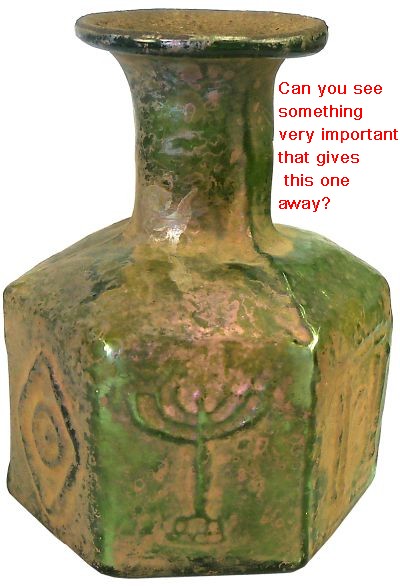
A seller in New York has many.
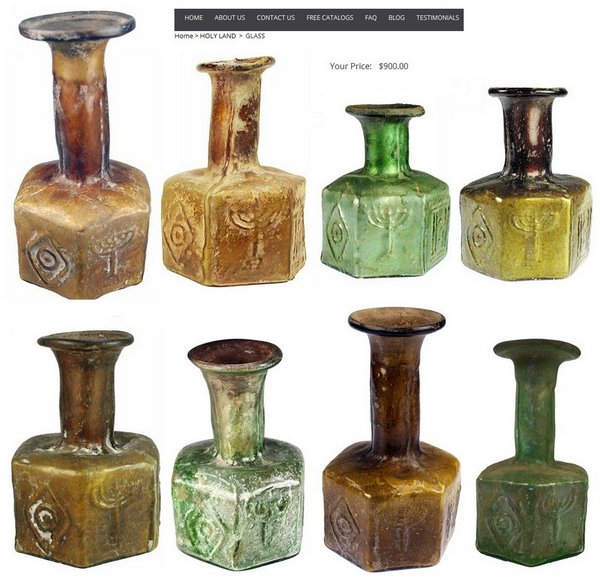
And here is one I have managed to get hold of.
Not $900, only $25.
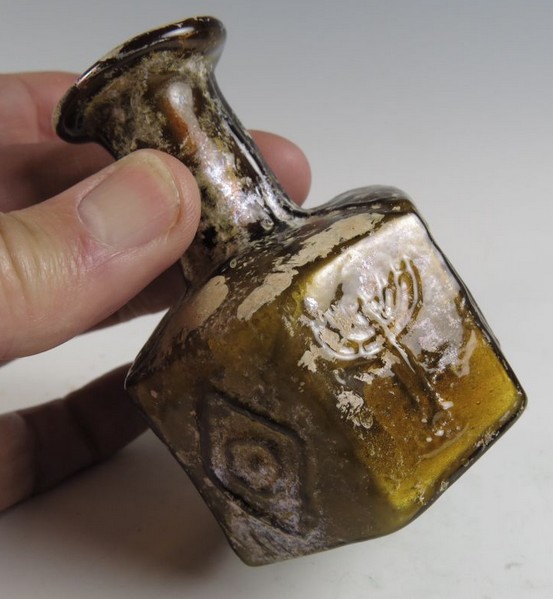
And another.
In the Benaki Museum in Athens.
But as with the British Museum example, one would need to see more views to be able to say.
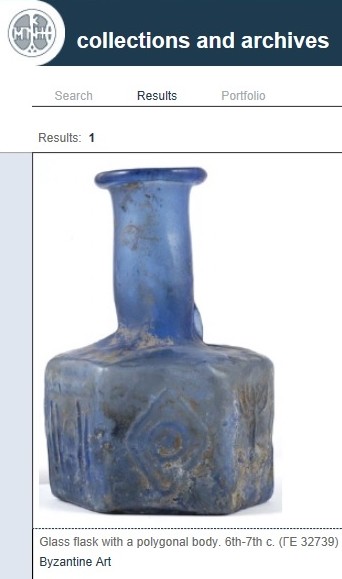
One treated to make it look more convincingly ancient but sold honestly as a reproduction.
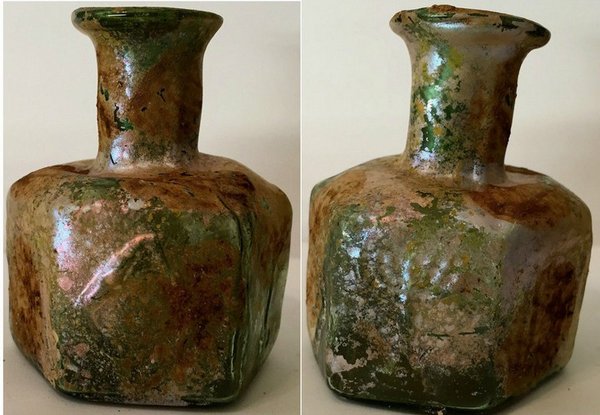
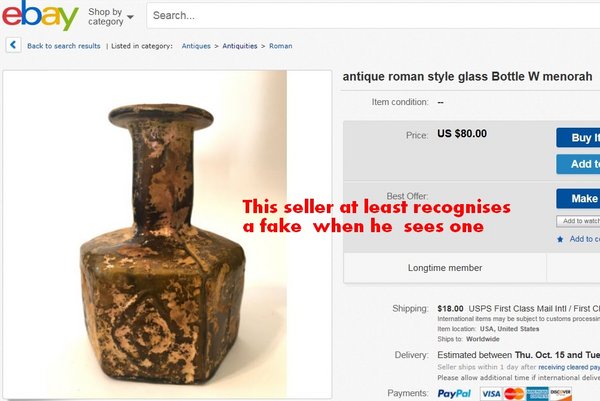
Good references for this type of glass are:
• Matheson, Susan B. Ancient Glass in the Yale University Art Gallery. New Haven: Yale University Art Gallery, 1980.
• Price, Jennifer "Decorated Mould-Blown Glass Tablewares in the First Century AD." In Roman Glass: Two Centuries of Art and Invention, edited by Martine Newby and Kenneth Painter, pp. 56–75.. London: Society of Antiquaries, 1991.
• Stern, E. Marianne Roman Mold-Blown Glass: The First through Sixth Centuries. Rome: "L'Erma" di Bretschneider, 1995.
• Stern, E. Marianne Roman, Byzantine, and Early Medieval Glass, 10 BCE–700 CE: Ernesto Wolf Collection. Ostfildern: Hatje Cantz, 2001.
• Whitehouse, David Roman Glass in the Corning Museum of Glass. Vol. 2.. Corning, N.Y.: Corning Museum of Glass, 2001
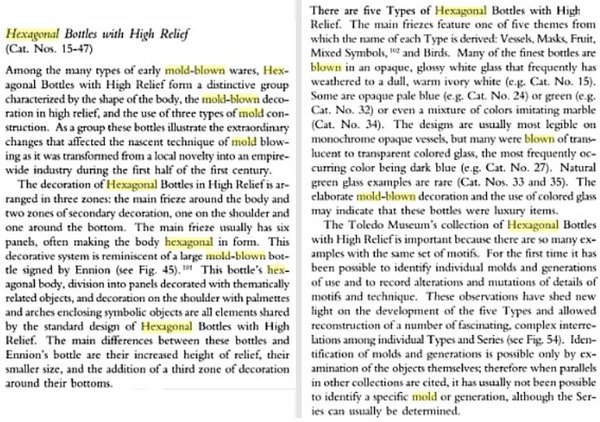
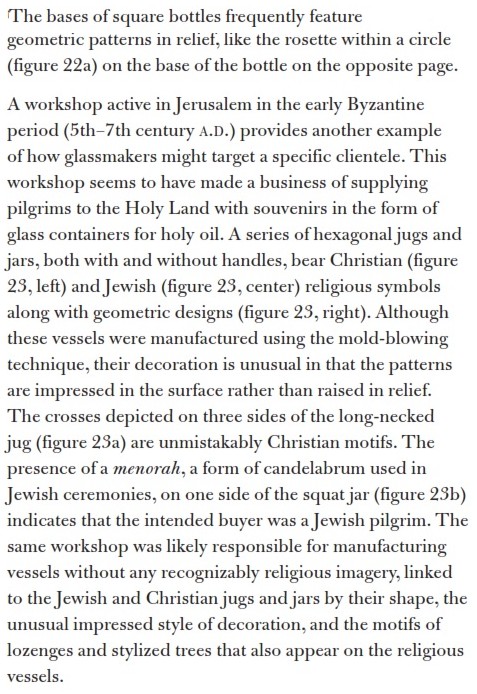
This particular type of mould made Byzantine glass, of hexagonal form with both Christian and Jewish religious motifs is mostly found as small handled juglets and squat pots.
Concerning the type under discussion on this page it is to be noted that it does not appear in the major literature,
namely:
Glass Pilgrim Vessels from Jerusalem , Part 1, by Barag in the Journal of Glass Studies, vol. XII, Corning, 1970
Byzantine Mould-blown Glass from the Holy Land with Jewish and Christian Symbols, The Shlomo Moussaieff Collection, by Martin S Newby,
Mold-blown Glass: The First Through Sixth Centuries by E. M. Stern.
But fakes of this type can be quite well made:
This yellow one is a fake:
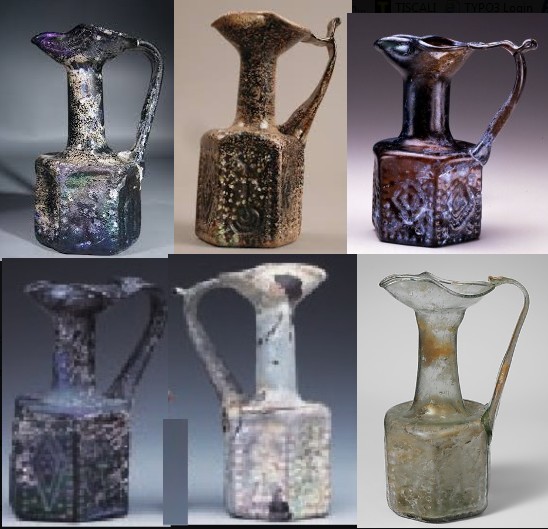
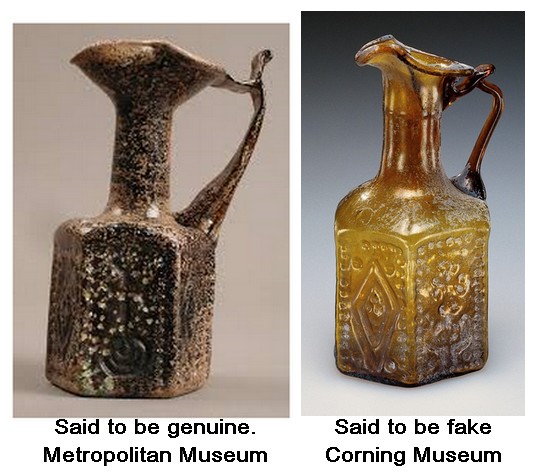
Or pots/jars....
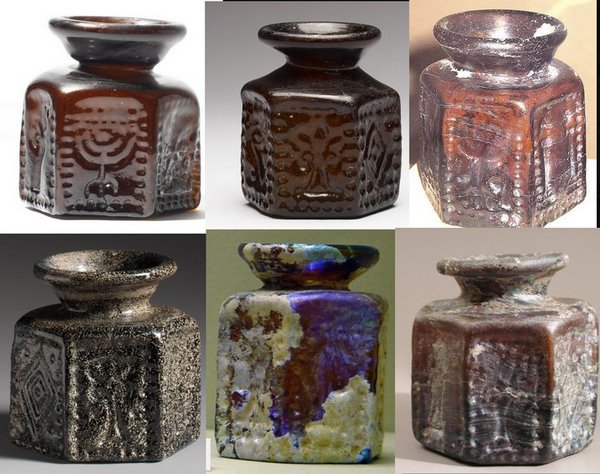
Lots of other fake mould blown glass available.
So did the BM get it wrong? One would need to see other photos of the piece to decide.
However not all museums fall for these..
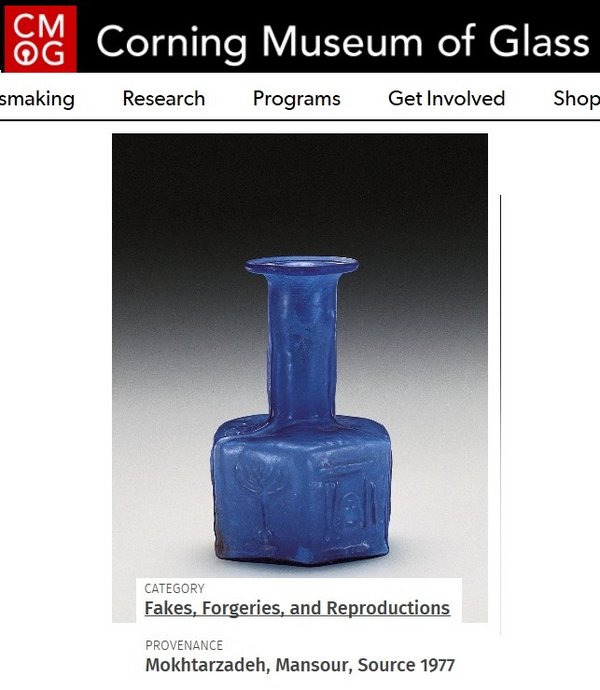
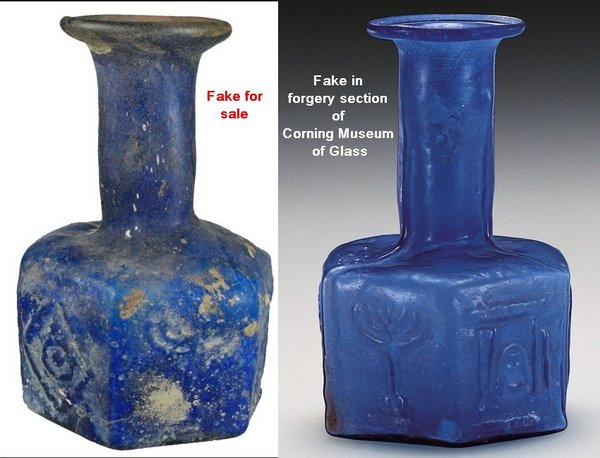
If it is a fake I think I know where it came from. Interesting that they have been available since 1977 at least.
This is not the Mansoor collection : which is (in)famous in its own right:
http://egyptology.blogspot.co.uk/2005/06/mansoor-amarna-collection.html
The type is still for sale all these years later..
There are probably hundreds in private collections, and who knows, in other museums too.
Short video to watch:
Listen as former curator David Whitehouse describes glass fakes and forgeries.
Fakes and forgeries of ancient glass have been produced since the 18th century.
Poor examples are easy to detect because they fail to reproduce the characteristic features of genuine pieces.
However, skillful forgeries can fool experts for years before some inconsistency of style or technique reveals that they are modern.
http://www.cmog.org/video/fakes-forgeries
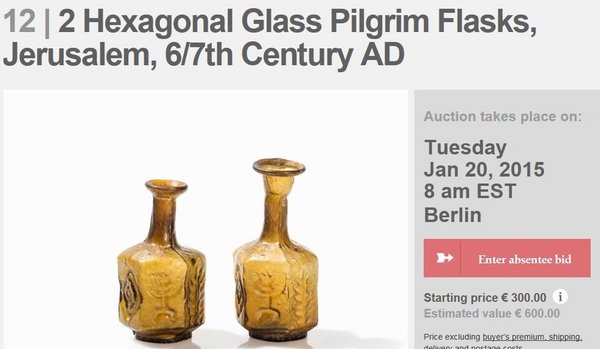


Home | About This Site | Privacy Statement | Gallery | Testimonials | Guarantees
About Collectors' Resources pages | What's New
Search | Site Map | Contact Us
